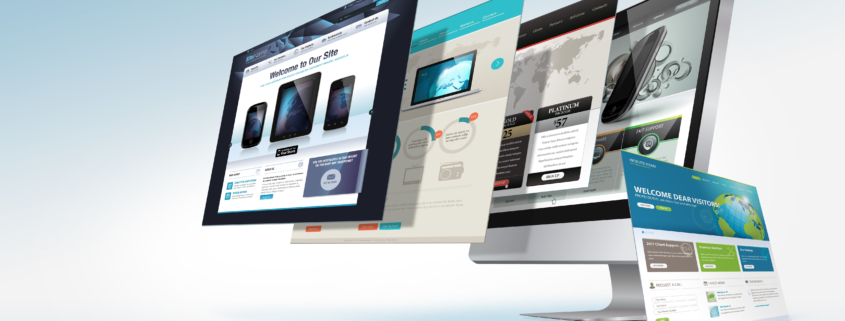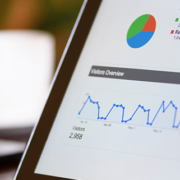How Web Design Can Affect Your Digital Marketing Strategy
When putting together a digital marketing strategy, web design should be one of the first things you consider. How will your navigation, messaging, forms and other elements stand out to potential customers? It’s all about the details when it comes to enticing a user to engage with your site.
No matter what industry you’re in, your website needs to have an aesthetically pleasing and responsive design that works on all devices. In addition, businesses also need to think about eliminating all friction, so that the user experience leads the visitor directly to what you want them to do. In most cases, that means a successful transaction.
Here are some other things to consider when looking at web design and your digital marketing strategy.
A Note Before You Make Changes
Before thinking about new website design, you should get your design and strategy stakeholders together to look at your website traffic and campaign reports. Ask questions about how well the home page converts, what pages are visited the most, what landing pages work the best, and how to improve those through visually stunning yet conversion-centric design.
Why Website Design Is Important For Your Marketing Strategy
Even a beautifully designed website can have its problems if you don’t consider strategy, but the road goes both ways. Strategy and design have to come together if you want bigger sales, leads and overall higher engagement from your visitors.
When thinking about web design, marketers need to think about the customer journey from beginning to end. What catches their initial interest? How do customers follow up on what they saw? Are you looking for short-term sales, sign-ups, long-term higher ROI, or something else?
All of the answers matter when it comes to your marketing strategy and web design.
Marketers also have to think about KPIs and other initiatives, such as tracking new customers vs returning customers, attributing social media campaigns, and understanding consumer behavior. This provides more insight into what’s working and what needs to be improved.
Fluid User Experience and Checkout
Everyone has been saying “UX, UX, UX!” for years, but what does that actually mean? Most people think it refers to responsive design, easy navigation, and making it easy for customers on mobile to checkout. The truth is that it’s all those things and more.
When considering a change to your UX, brands need to look first at their bounce rates, abandons, page session time, and so forth. These metrics will show you exactly where customers are experiencing friction. Perhaps a form isn’t loading on mobile, or maybe your checkout is asking for too much information when people just want to make a purchase and move on.
As such, designing your website with the easiest, most fluid and responsive user experience should be the main priority when looking at your strategy and objectives.
Website Speed
Another crucial aspect to consider when taking a look at your website’s design is something you’re not going to see but feel – your website’s load time. Ensuring that your website is utilizing the right plugins and right size images and doesn’t have extra, unnecessary code and extra-large images will go a long way at helping your site across the board.
Improving your site’s speed not only helps people access your site quicker, but it also improves your SEO, audience engagement, conversions and overall digital marketing efforts. It’s absolutely something you can’t forget when updating your website.
Conversion Rate Optimization (CRO)
Along with user experience and site speed, marketing strategies need to also include improvements specifically for conversions. What are you doing on your website to get people to sign up, transact, and return for more? The first step is to start monitoring your conversion metrics and incorporating your findings into the new design.
Here are some KPIs for conversions to monitor:
- Conversion rate
- Cost per conversion
- Conversions per channel
- Campaign cost vs cost per conversion per channel
- Lead cost and lead quality (purely for lead generation/customer acquisition campaigns)
- ROAS (Return on Advertising Spend)
Conversions directly show you how well a customer is able to do what you want them to do on your website. If you are getting a huge number of transactions every day and your campaigns are delivering on ROI, then your landing pages and overall website experience must be doing something right.
However, could you be achieving higher conversions with a different landing page design?
The best way to kick off CRO is by A/B testing or split testing your campaign landing pages and home page designs. You can easily do this with certain software, such as Unbounce.
In addition, CRO strategies also show you that beautiful website design is not always optimized for conversions. There are necessary elements like checkout pages, call-to-actions, forms, email marketing, and SEO that all help your website convert traffic to loyal customers. That’s where strategy comes into play.
Go Into Overdrive with Your Brand
Your brand’s influence can be subtle, but is that working? When it comes to branding, there is such a thing as striking a balance between building influence and maintaining just enough so that you don’t annoy your customer. However, some brands need to put their brand-building into overdrive with digital marketing and online campaigns.
Do people recognize your brand across the internet? What do these audiences think about your brand? If you think it’s impossible to know the answers to those questions, you probably don’t have tracking set up to show you when your brand is mentioned and what customers think. That’s how easy it is for brands today to manage their reputation online and gain insights into what customers actually think.
One of the biggest tell-tale signs that your brand is influencing customers is how fast visitors and first-time customers turn into brand advocates. Social media strategy is a key factor in understanding your audience. What content does your audience like to see? How can you incorporate what your audience likes into your site design?
78% of consumers studied said that they want brands to use social media. Most customers today engage with brands on social media first before making a purchase. They may like a post, share content and comment on products that they want, but don’t feel the urge to buy. In this case, you need to incorporate a strategy for conversion into your branding.
For example, you are constantly on Instagram amassing followers, comments and likes, but you don’t get any transactions from your content. This is a classic example of where your online marketing strategy isn’t doing enough to support your brand.
You should have links to your products on the image, which you can do by setting up an Instagram store, or you can simply make sure to mention the products by name and the link in your profile.
This link is integral on Instagram since you can’t link in posts, so make sure your landing page is designed to convert traffic.
What Comes Next for Your Web Design?
Brands need to think about how customers find and research products online before anything else. Once you know what audiences are thinking about, you can change elements of your design to swiftly move a visitor into your customer journey. Your website should make it nearly impossible for them to abandon. This is the point where strategy and design can truly work together as a powerful force for online conversions.
If you’re looking for help on elevating your web design, consider hiring a digital agency to help. We at iSynergy have designed countless websites and even won an award for our work in the past. Contact us today to get started.











